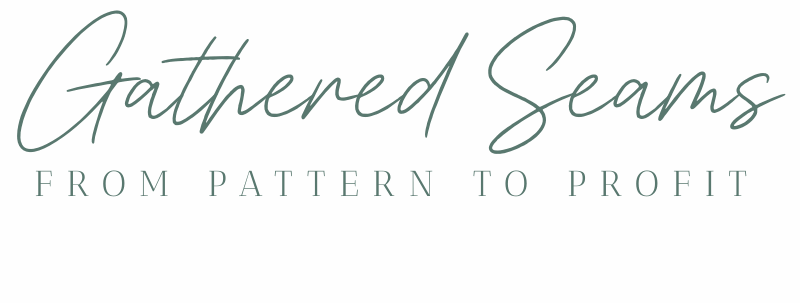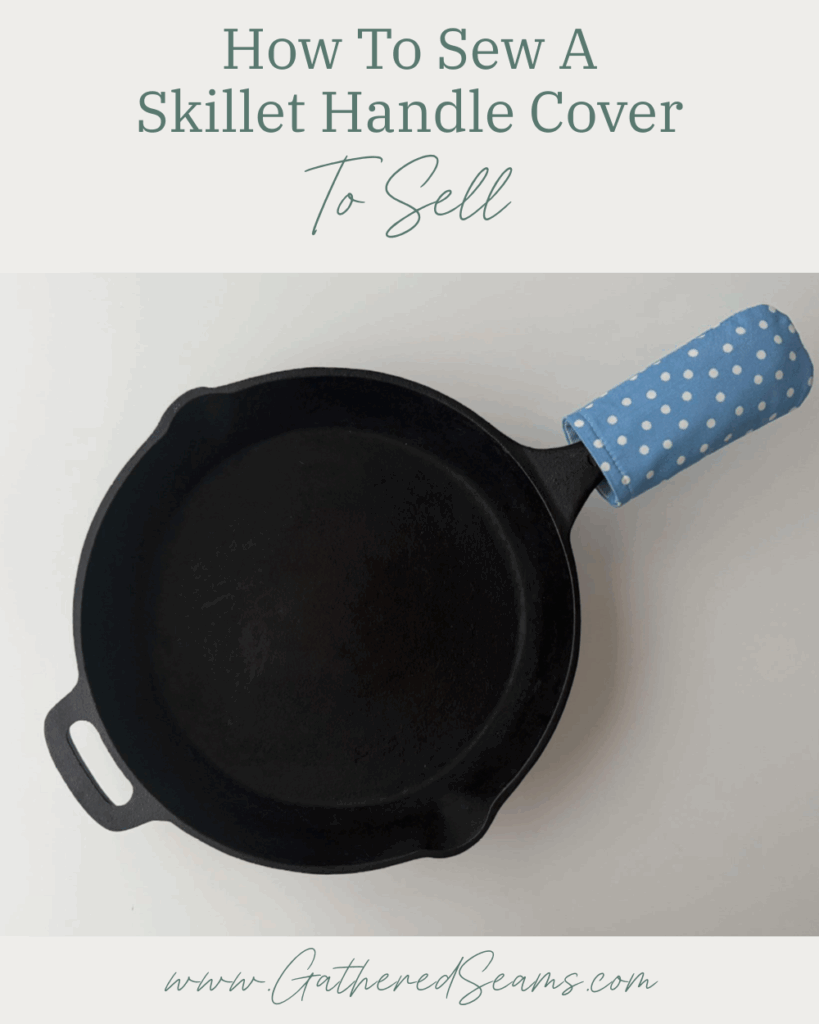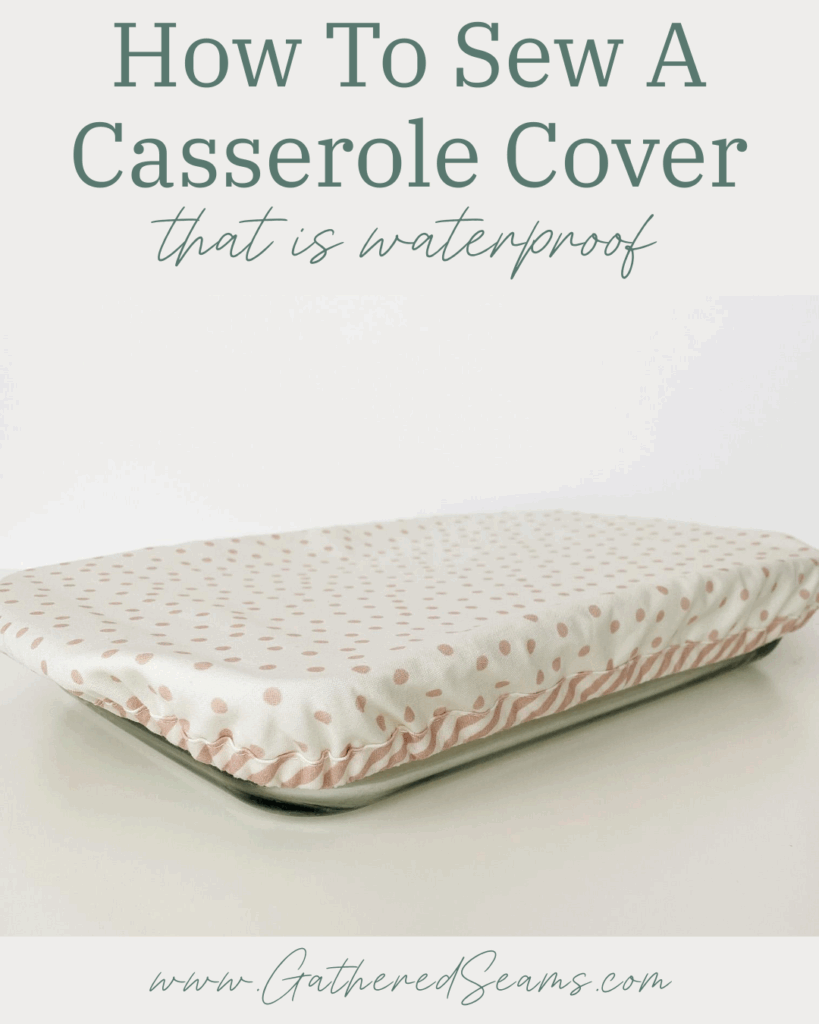How To Sew Measuring Cup Covers To Sell
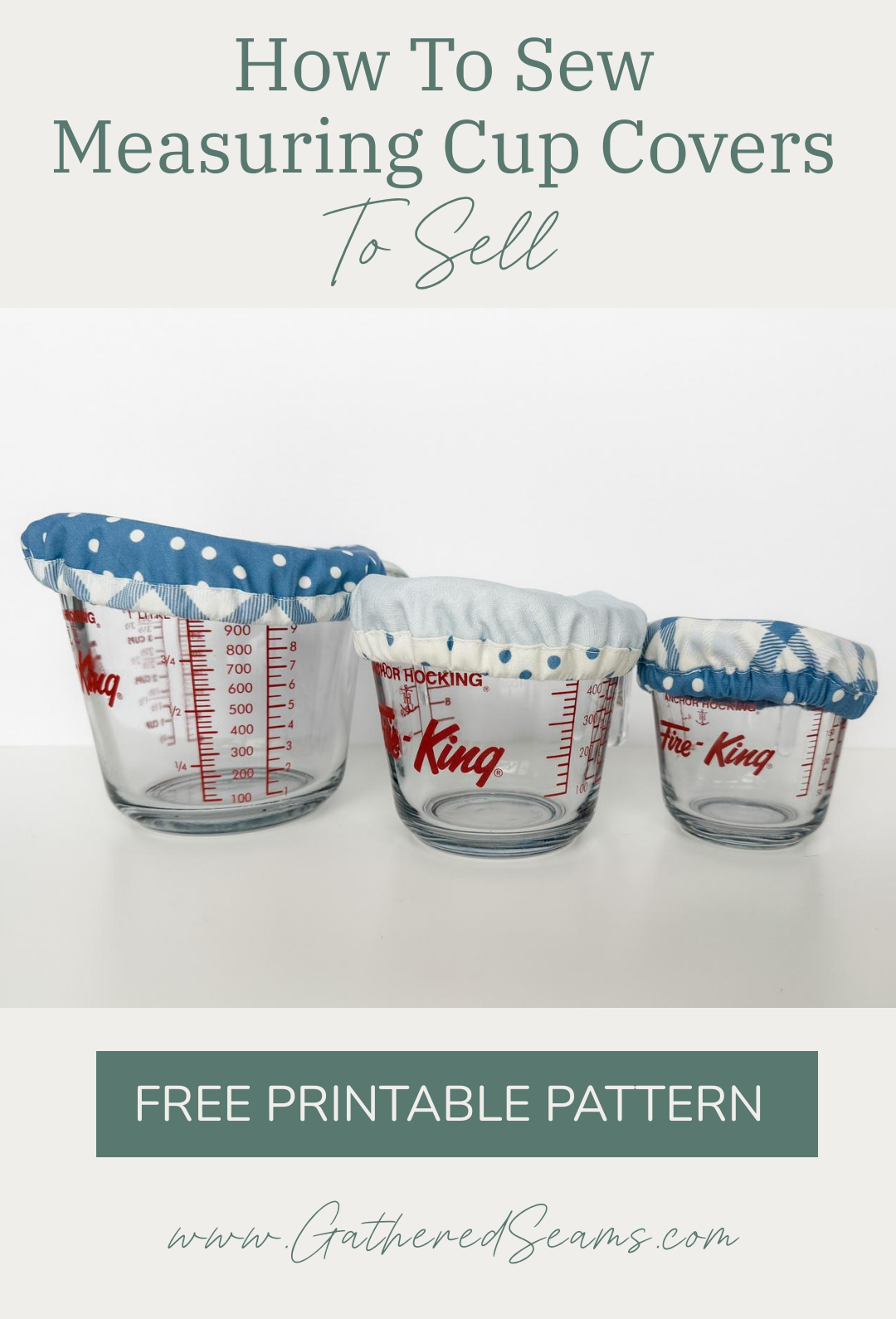
These reusable covers are ideal for using with measuring cups to make dressings and sauces, and then storing them in the refrigerator.
I’m always using beeswax wraps to cover my measuring cups when storing homemade salad dressing in the fridge, but I find they don’t stick as well.
So I decided to draft a pattern for my set of liquid measuring cups.
Pattern Notes
- Sizing – this free pattern comes in small, medium, and large sizes, which are designed for 1 cup, 2 cup, and 4 cup capacities.
- Style – the pattern was designed using glass Anchor Hocking liquid measuring cups. I haven’t tested these on other brands of measuring cups, but they should work on most that have an open handle. This pattern won’t work for D-handles. If you’d like these to fit over larger open handles, you can make a larger opening.
- Waterproof – these covers have a food-safe PUL lining so they’re wipeable and will help keep moisture in.
Sewing measuring cup covers to sell
These likely won’t be a big seller in your product line, as not everyone will store their dressings/sauces in measuring cups. And for the few times they do, they may prefer to use a small piece of plastic wrap.
However, these are a good item to sell if your target audience is eco-conscious. Every effort helps and these will replace plastic wrap, even when used occasionally for measuring cups.
- Sets – I would sell these as a set of 3 (small, medium, and large)
- Add-on – Due to their lower price point, these make a great add-on product when selling bowl covers, casserole covers, or other kitchen/table linen products.
- Adaptions – if these do become a big seller for you, consider creating versions that will work with different styles of measuring cups (e.g. OXO Good Grip measuring cups with a larger handle or to fit over any style of handle).
- Tagging – you could include a tag that shares your favorite salad dressing.
Selling points
When promoting your bowl covers at a craft show or online, be sure to mention the following points in your signage/product description/sales pitch:
- Food-safe plastic – it’s essential to note that you have sourced materials that are food-safe and won’t introduce harmful chemicals when they come into contact with food.
- Waterproof – this means it will help keep moisture in the dish, similar to how plastic wrap does. This is ideal when storing sauces and dressings.
- Eco-friendly – reusing these covers means there’s less environmental impact. You could also use organic cotton, hemp, or linen for the top of the cover.
- Washable – whether your covers must be handwashed/rinsed or can be thrown in the washer, will depend on the materials you choose. However, the fact that these items can be cleaned is a bonus.
Click here to jump to the selling section at the end of this article, which has more tips.
As an Amazon Associate, I earn from qualifying purchases.
Materials
- Top fabric (cotton or linen are ideal)
- Food-safe waterproof fabric: food-safe PUL, food-safe waxed cotton, food-safe nylon, food-safe laminated cotton)
- *Bias tape (finish width 1/2″ minimum; the wider the easier it will be to thread elastic through). Here’s how to make your own (which is cheaper).
- *1/4” wide elastic
- Thread
*Length varies based on the size you’re making. Please see each pattern piece for lengths.
Tools
- Sewing machine
- Scissors
- Safety pin or bodkin *It’s important that your safety pin/bodkin is small enough to fit inside the binding, which is about 3/8″ wide once stitched.
- Fabric clips
- Iron
Steps to sew measuring cup covers
Step 1 – Cut out pattern pieces
Print your free patterns and cut them out.
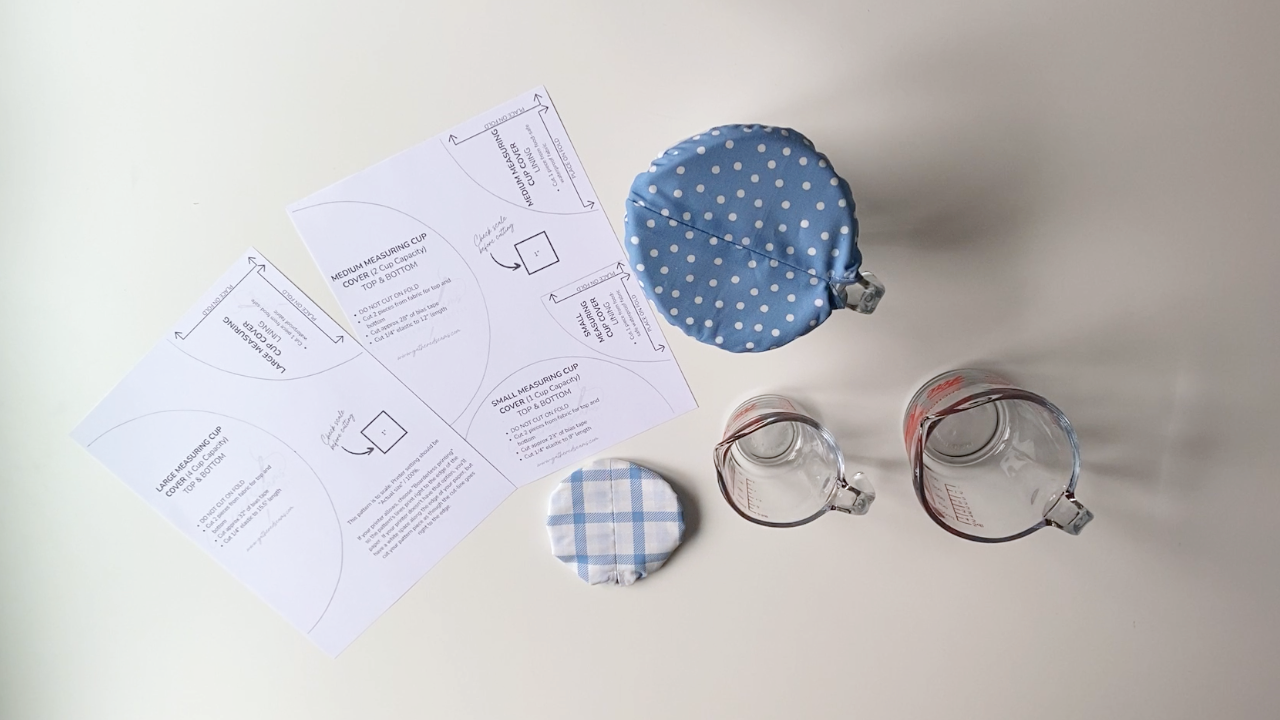
Iron your cotton fabric first (do not iron your waterproof fabric), so you can be sure your cuts are accurate. Then set your pattern pieces on your fabric. If a pattern piece has an arrow with “FOLD” along the edge, you can either:
A) Fold your fabric so that each edge with “FOLD” along it, lines up with a folded edge.
C) Trace the pattern piece onto your fabric using a temporary fabric pen, flipping the piece each time and tracing to create a full circle.
B) Print the pattern piece four times, cut them out, flipping each piece over, so they mirror each other and create a full circle, and tape them together with no overlap.
Cut:
- 2 pieces out of cotton or linen for the top
- 1 piece from food-safe PUL for the bottom
- Bias tape – length varies depending on size; please see each pattern piece for length needed
- Elastic – length varies depending on size; please see each pattern piece for length needed
Here are instructions for making your own bias tape: How To Make Bias Tape
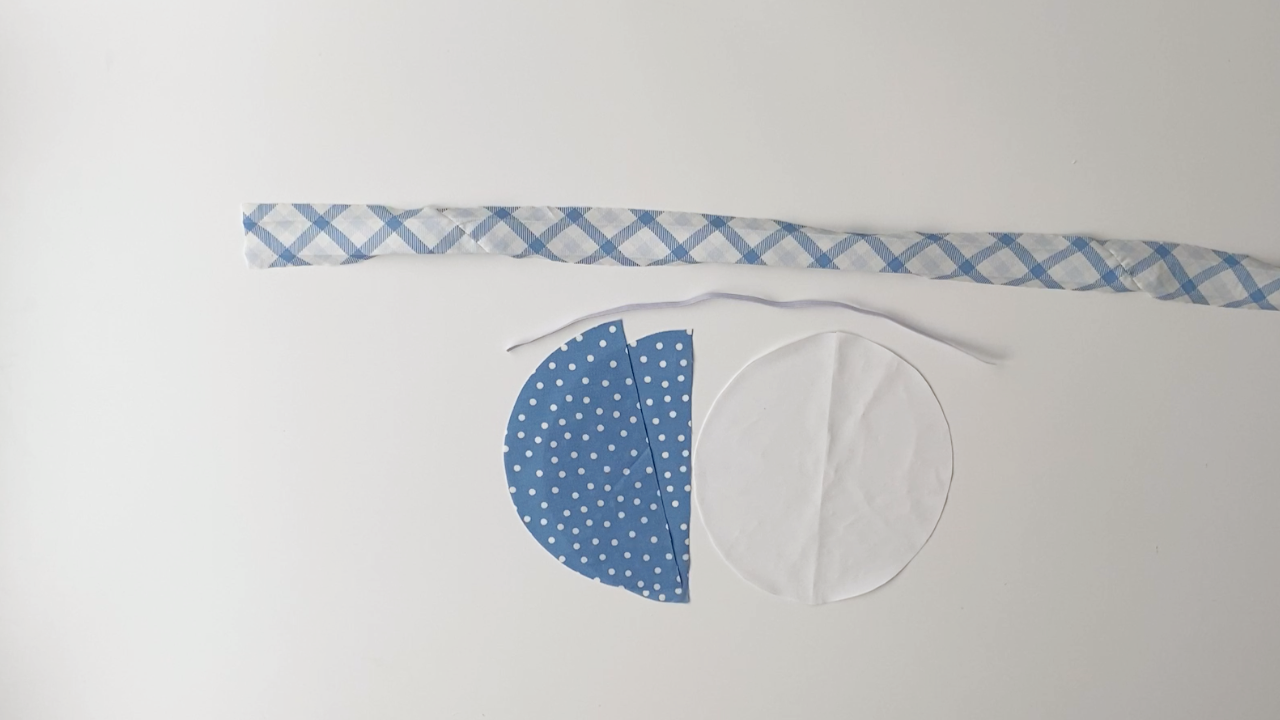
Step 2 – Sew top pieces together and create slit
Place your two semicircles with right sides together.
Using a temporary fabric marker, mark a line 2” away from one end, this will create a slit for the handle.
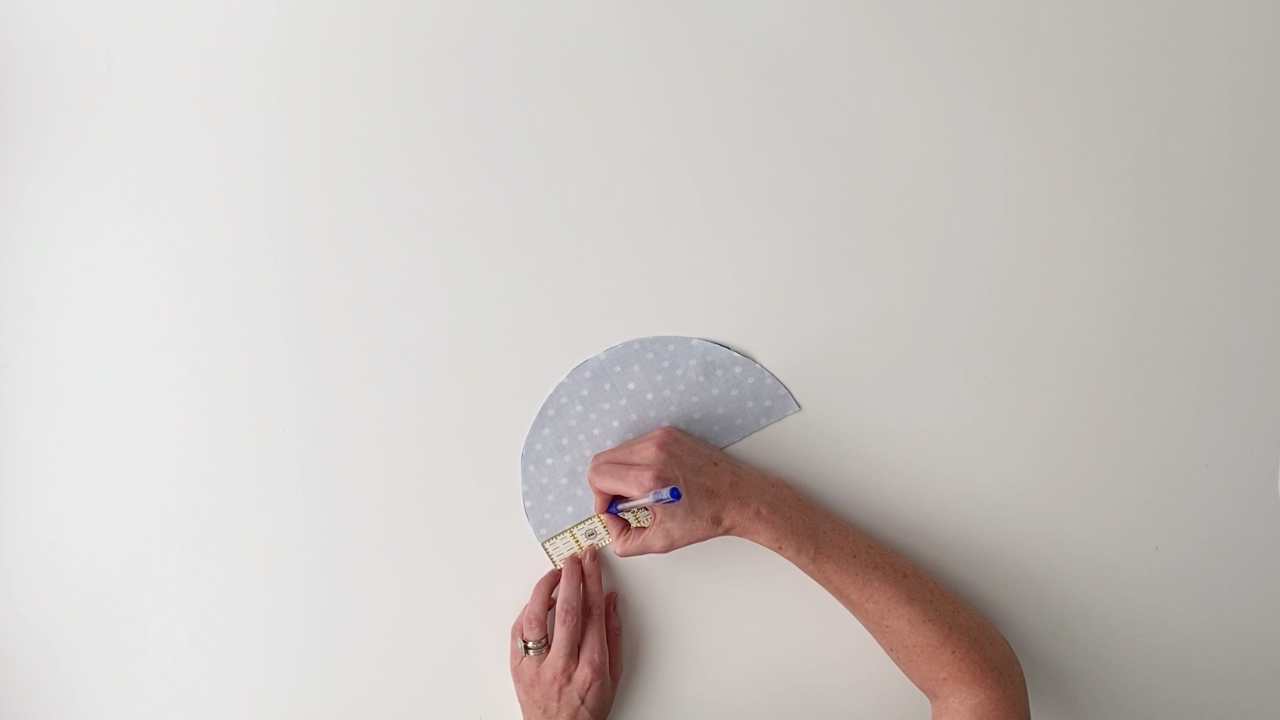
Sew along the straight edge using a 1/2” seam allowance, stopping at the 2” mark and backstitching.
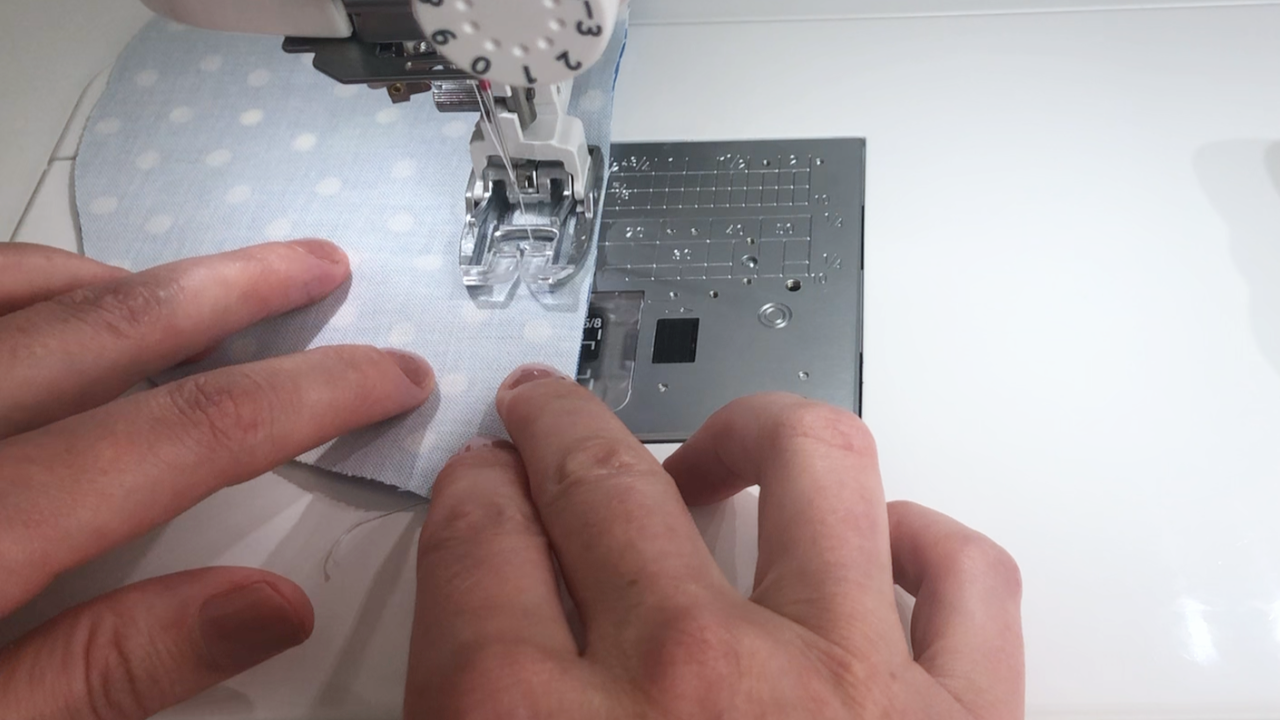
Press that seam open.
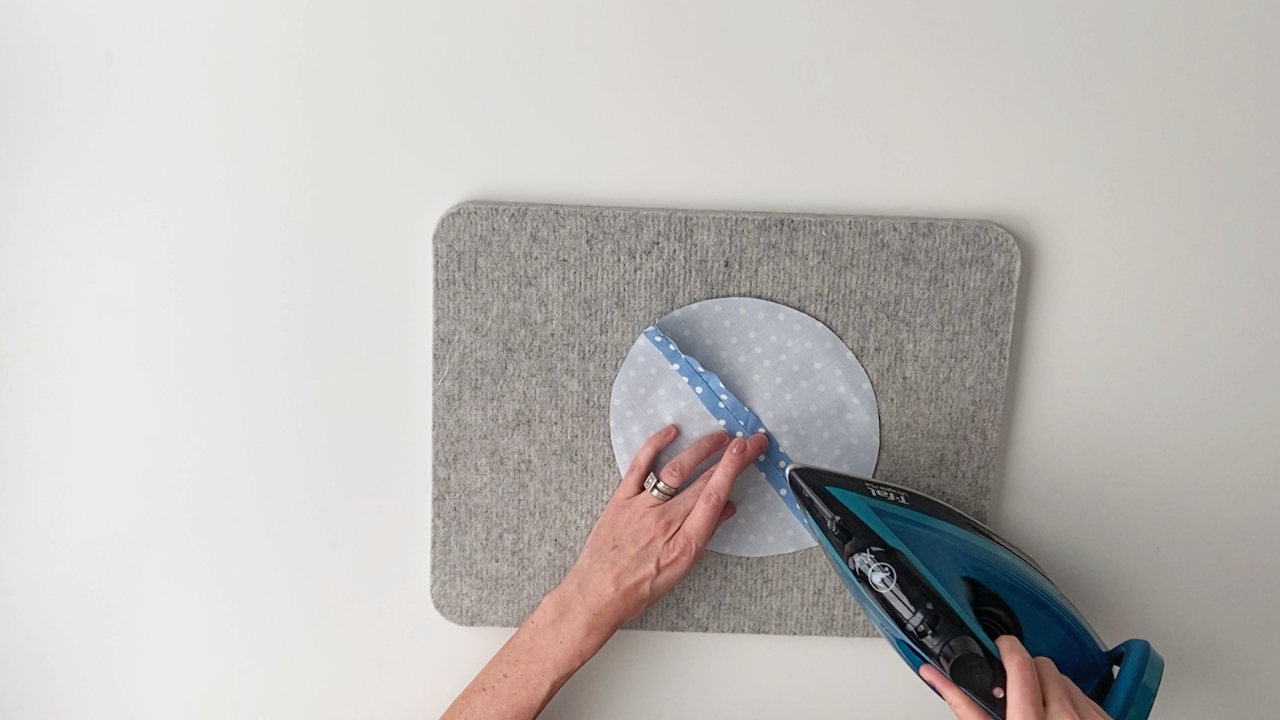
Step 3 – Layer top and bottom pieces
With wrong sides together, layer your top piece on top of the lining and clip together.
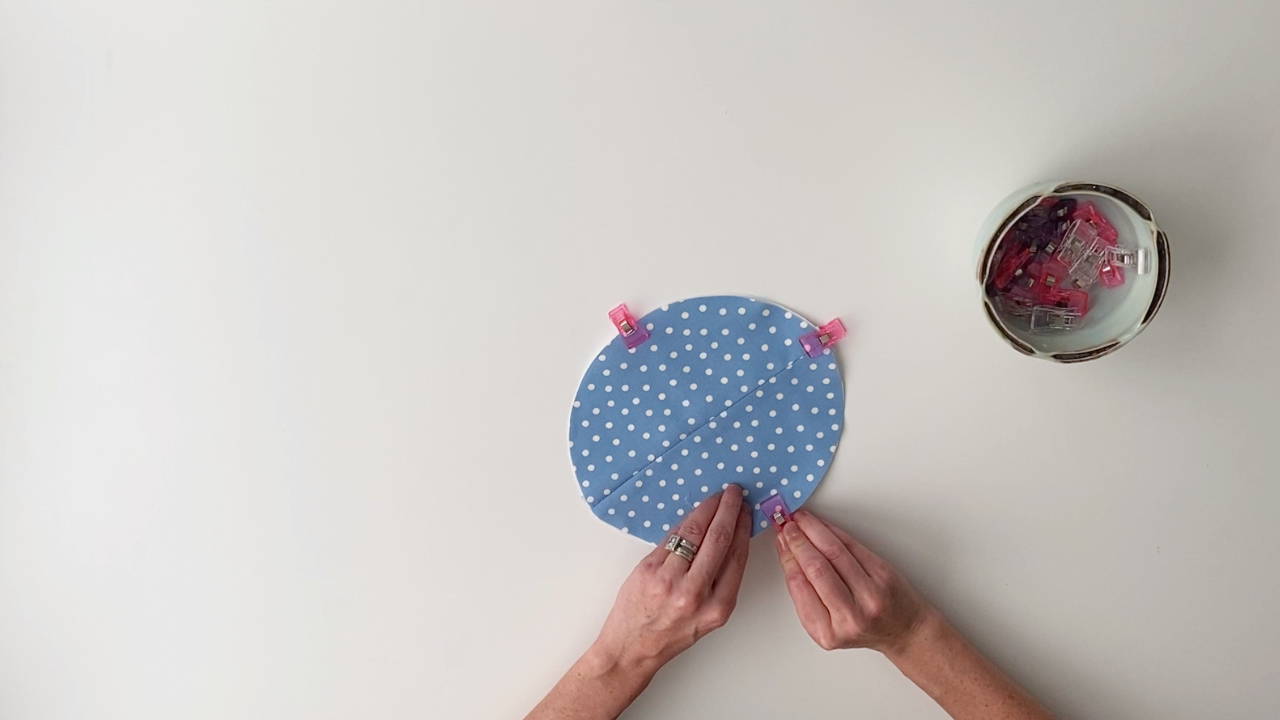
Sew up on one side of the slit, across the top, then back down.
You can use a temporary fabric marker to mark the top of your slit (so you know where to stop sewing and pivot your fabric).
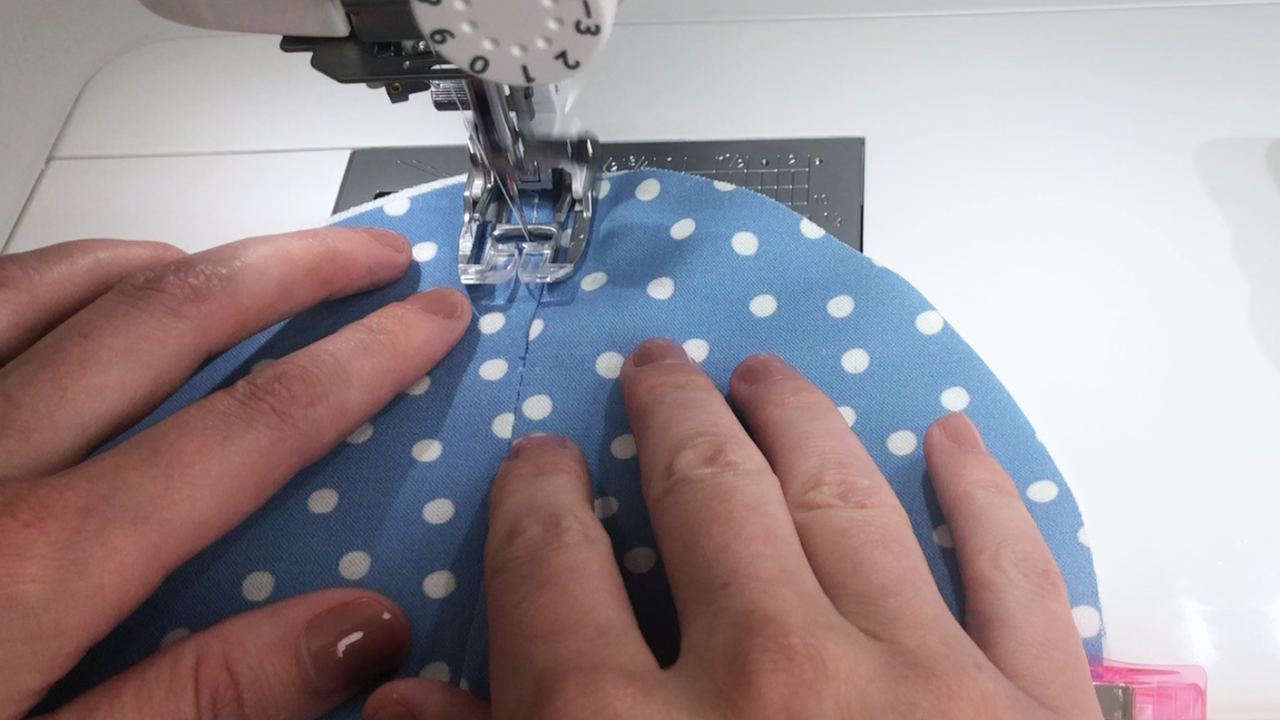
Step 4 – Cut slit in lining
Cut a line in your lining to follow the slit, but leave about 1/2″ of the bottom edge of the plastic lining together.
I use my rotary cutter, but you can also fold your fabric in half and use scissors to cut an opening.

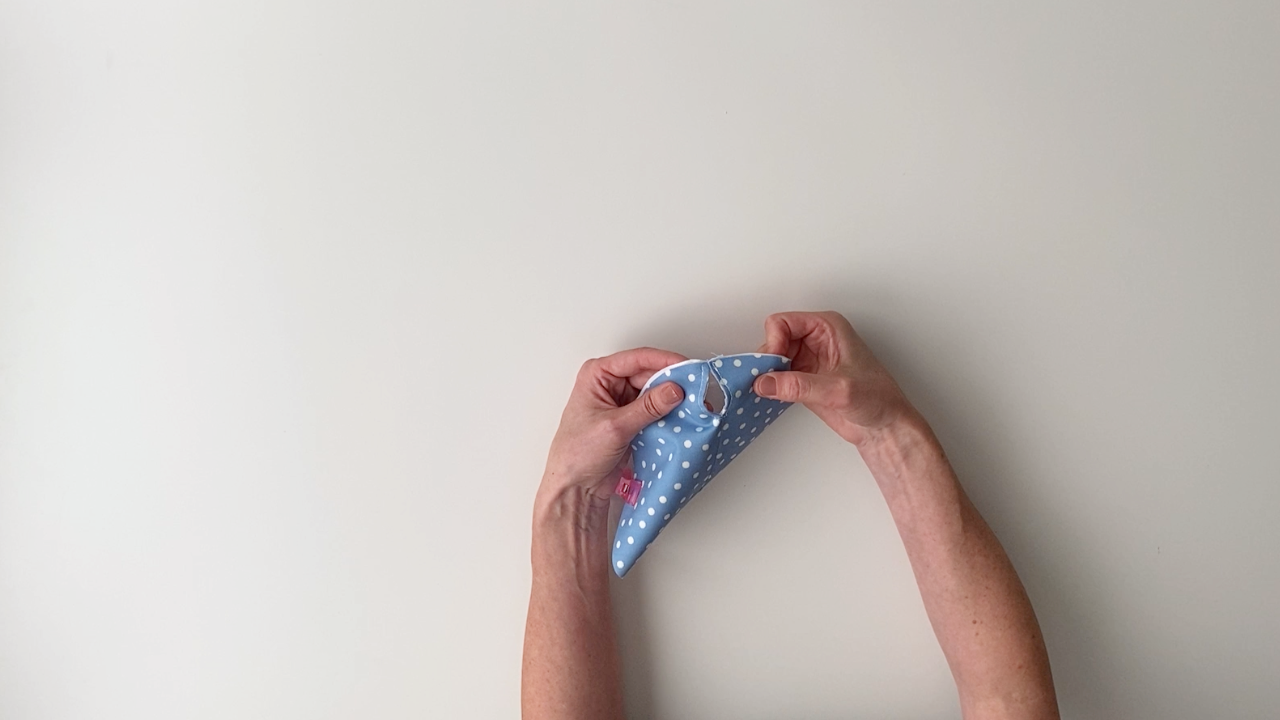
Step 5 – Sew bias tape to first side
With your top and bottom still clipped together, you’ll sew the bias tape on.
Start sewing your bias tape about 3” in (so you have 3″ of loose bias tape).
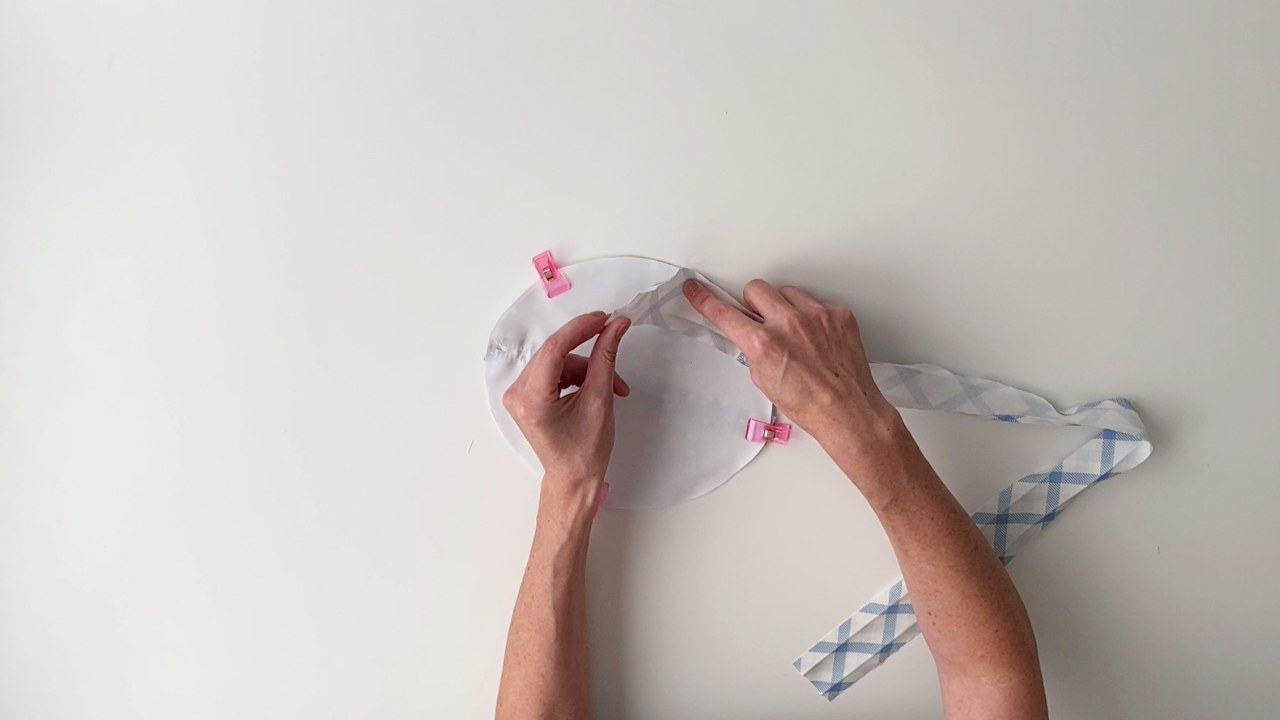
Sew the first side of your bias tape to the lining side first. I find the plastic sticks to my sewing machine surface if the plastic side is down.

Sew the ends of your bias tape together, then finish stitching.
There are many ways to attach the ends, I share my favourite way in the video and in the visual below:

Step 6 – Flip bias tape and clip
Flip your bias tape to the top side of your cover and clip into place so the inside folded edge of the bias tape is covering the line of stitching you just completed.
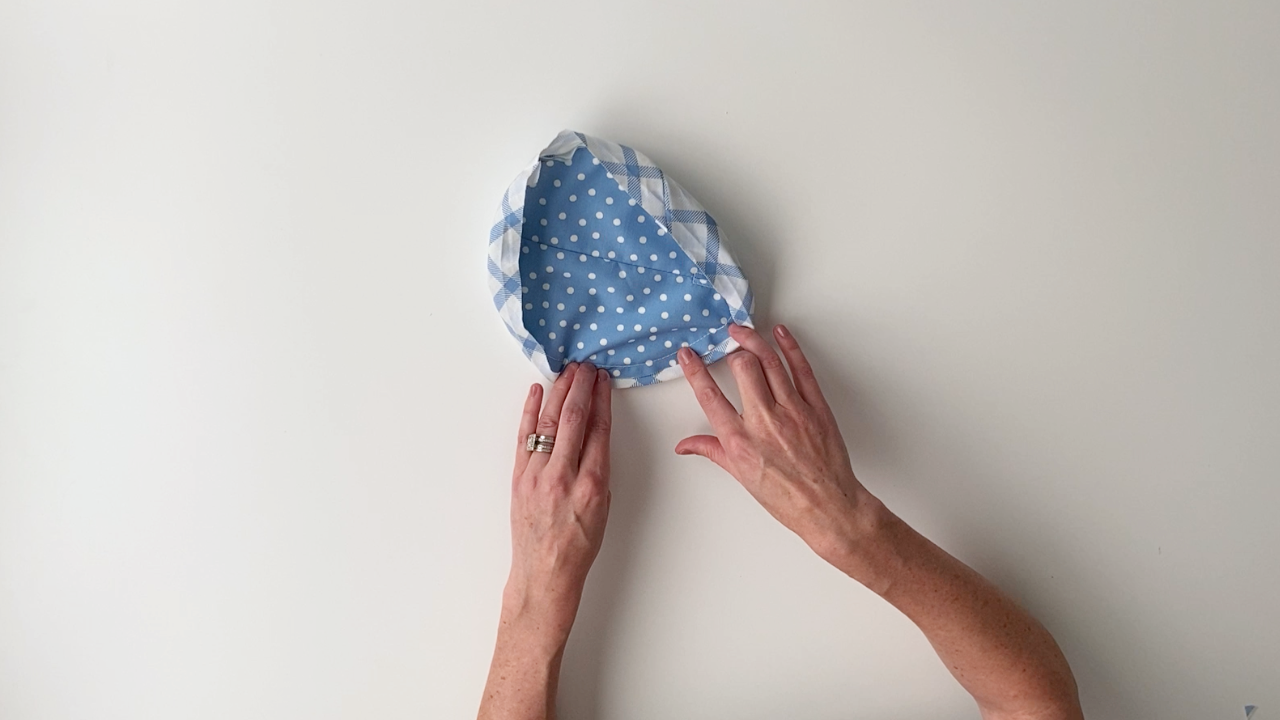
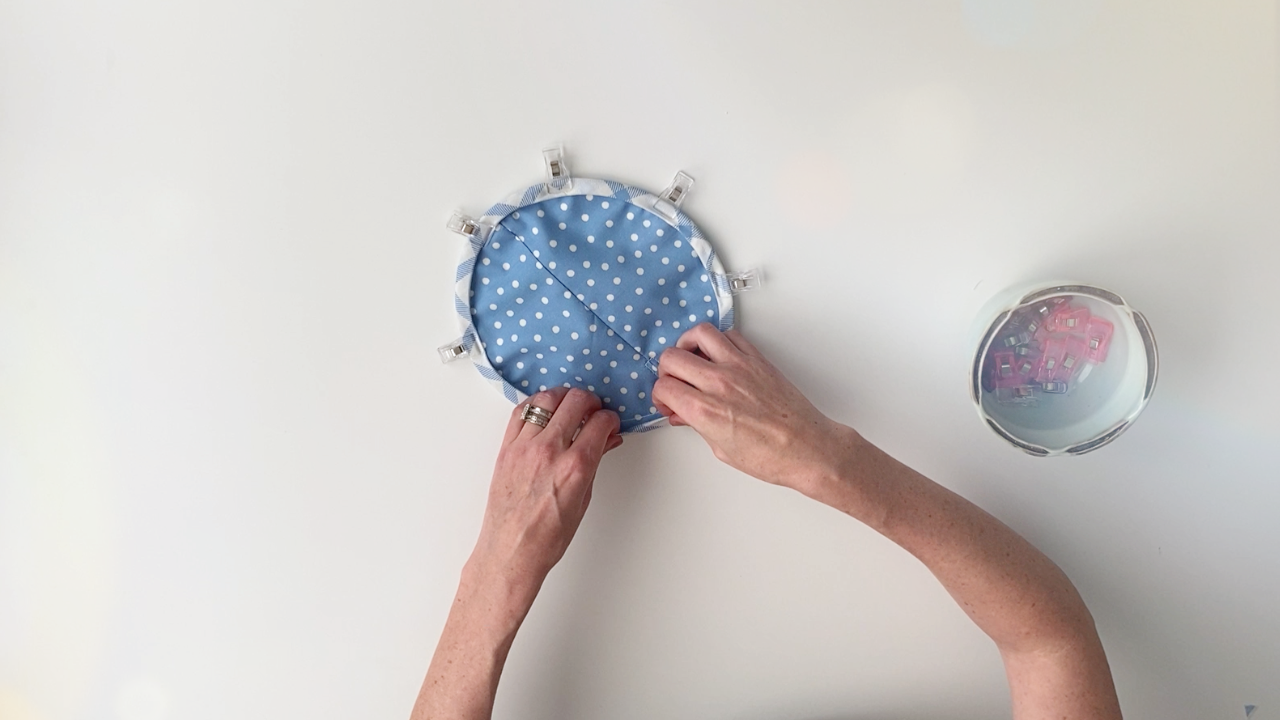
If there are any spots that your bias tape doesn’t extend to cover the line of stitching, simply trim some of the excess fabric from the edge of your circle.
Step 7 – Top-stitch bias tape
Using a temporary fabric marker, mark two lines, approximately 1” apart, which will indicate where you stop and start sewing, leaving an opening to feed the elastic through.
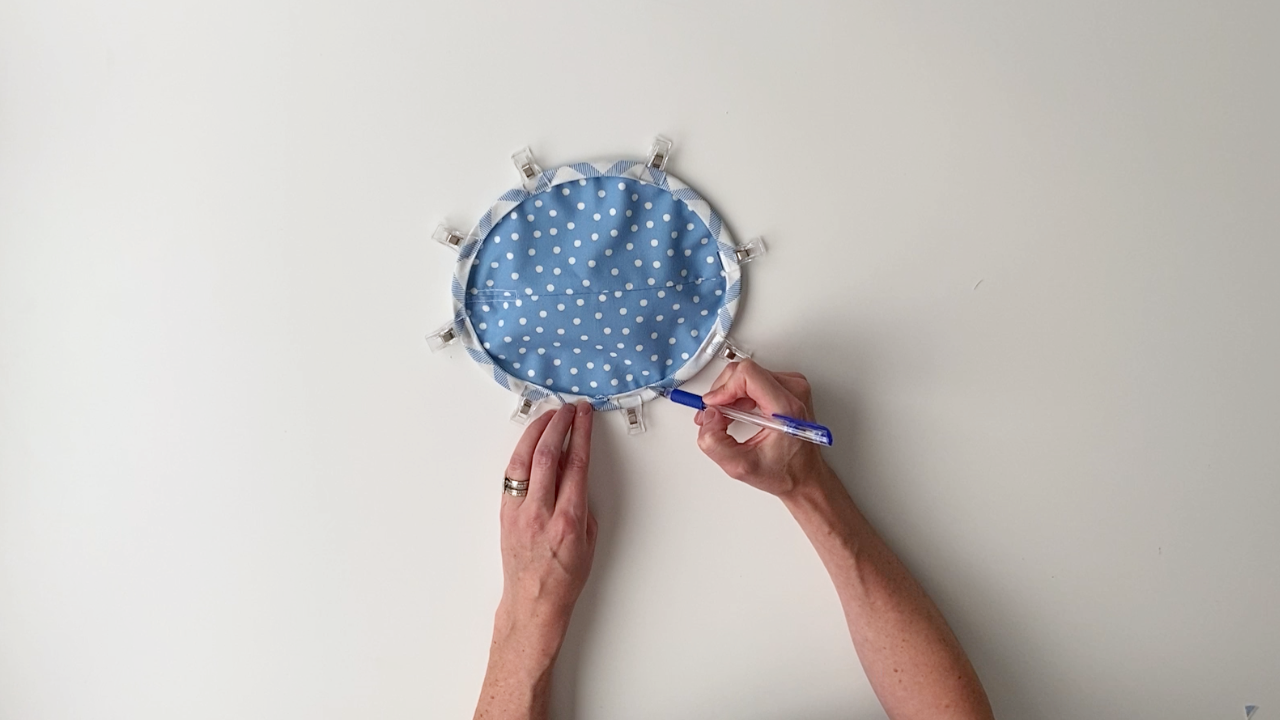
With the cotton fabric side up, stitch the second side of the bias tape into place.
Sew about 1/8” away from the inner edge of the bias tape.
It’s important to sew far enough away from the outer edge of the circle that you’ll be able to fit a safety pin inside the bias tape.

Step 8 – Thread elastic through bias tape channel
Attach a safety pin to one end of your elastic and thread it through the opening left in the bias tape.
You can attach a second safety pin to the other end of your elastic and secure it to the bias tape to be sure it doesn’t get lost inside the loop.

Once you’ve threaded the elastic all the way around the outer edge of the circle and you have both ends out, tie the ends of the elastic together. I like to use a balloon knot and pull it tight.
Pull that knot into the bias tape (so you don’t have to sew around it) and sew your opening closed.
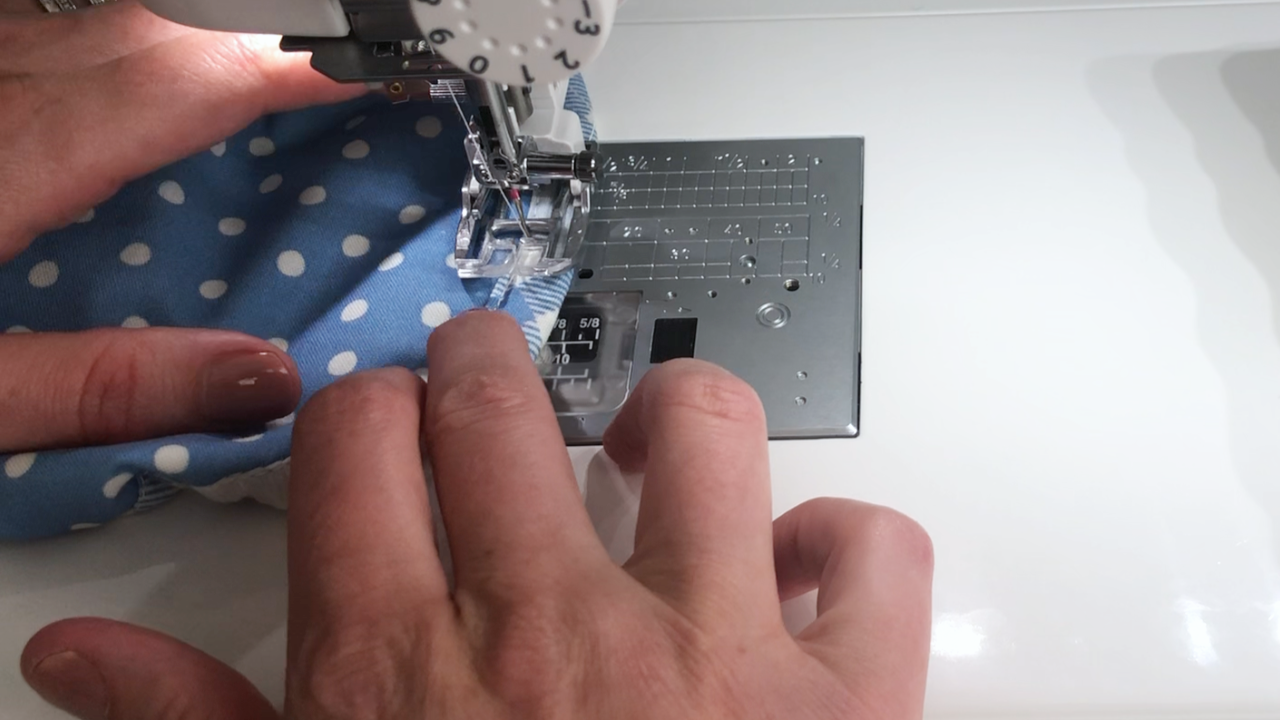
Stretch your bowl cover to distribute the fabric evenly around the elastic.
And your cover is complete!
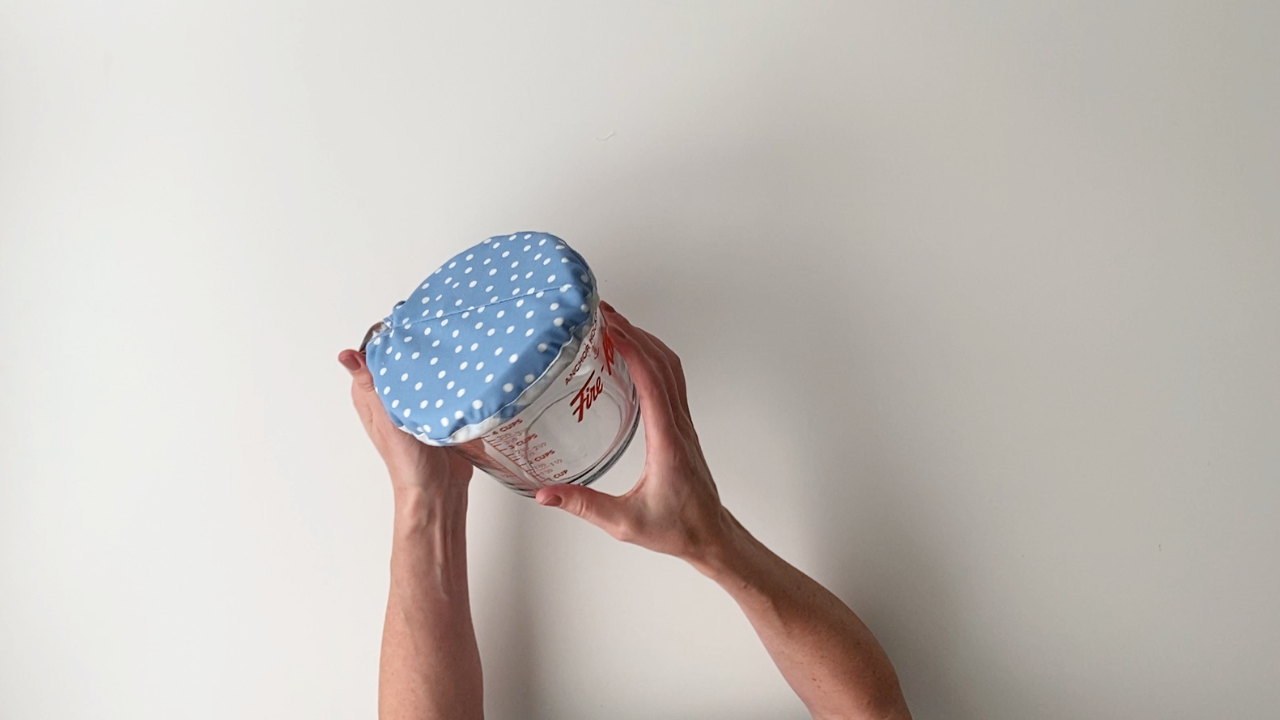

Now you can sell your covers!
If you want to start selling these covers at craft shows or online, there are a few things to consider.
1 – Pricing
First, you must ensure you can profit.
Using this pattern, pricing based on the sourcing below, and the basic pricing formula (Production costs x 2 = Wholesale price x 2 = Retail price), I would calculate the following:
- Cotton – $4.99/yard
- Food-safe PUL – $6.50/yard
- Elastic – $0.14/yard
Materials Costs for a medium-sized cover
Cotton = $0.25/cover (can cut 20 circles from one yard of fabric)
PUL = $0.26 (can cut 25 ovals 7″ x 8″)
Elastic = $0.05 (can cut 3, 12″ strips from 1 yard)
Total = $0.56
Wages = $15/hour
I can make 5 covers per hour, when sewing in bulk.
Production wages = $3/cover
Total Production Costs = $3.56
Pricing Calculation:
$3.56 x 2 = $7.12 x 2 = $14.24
For a medium measuring cup cover, I would charge around $14.24
I would bump that price up or down based on my overhead costs, and bump it down when bundling the covers together.
I might sell a set of small, medium, and large measuring cup covers for $35.
That seems like a reasonable price and will cover my costs and wages.
This isn’t a product that’s commonly sold by handmade businesses (which could be a good thing (no competition) or a bad thing (no market for it)); otherwise, I would check on Etsy to see how my price compares to competitors.
2 – Additional Products
You’ll need to offer other products to complete your product line.
You can stick close to home and offer other reusable covers, targeting eco-conscious consumers.
Or you can expand into other linen products that are used in the kitchen or around the table:
3 – Stand Out
When building a brand and developing a product line, you must consider how you’ll stand out from the competition.
Start with your branding. How do you want people to feel when they:
- See your logo
- Visit your website or online shop
- Look at your products
- Read your emails or social media posts
- Etc.
Every element of your business should have a defined look, vibe, or feeling.
For example:
- Modern
- Whimsical
- Sophisticated
- Feminine
- Etc.
You would choose one or two descriptive words and try to apply them to each element (e.g. materials, photos, fonts, product names, etc.).
Find more details on making your business stand out here.
If you can profit, build a product line, and find a way to stand out, you have a good start to a business.
Then you can look into the steps you must take in your area to get your business set up and start selling at local craft shows or online.
